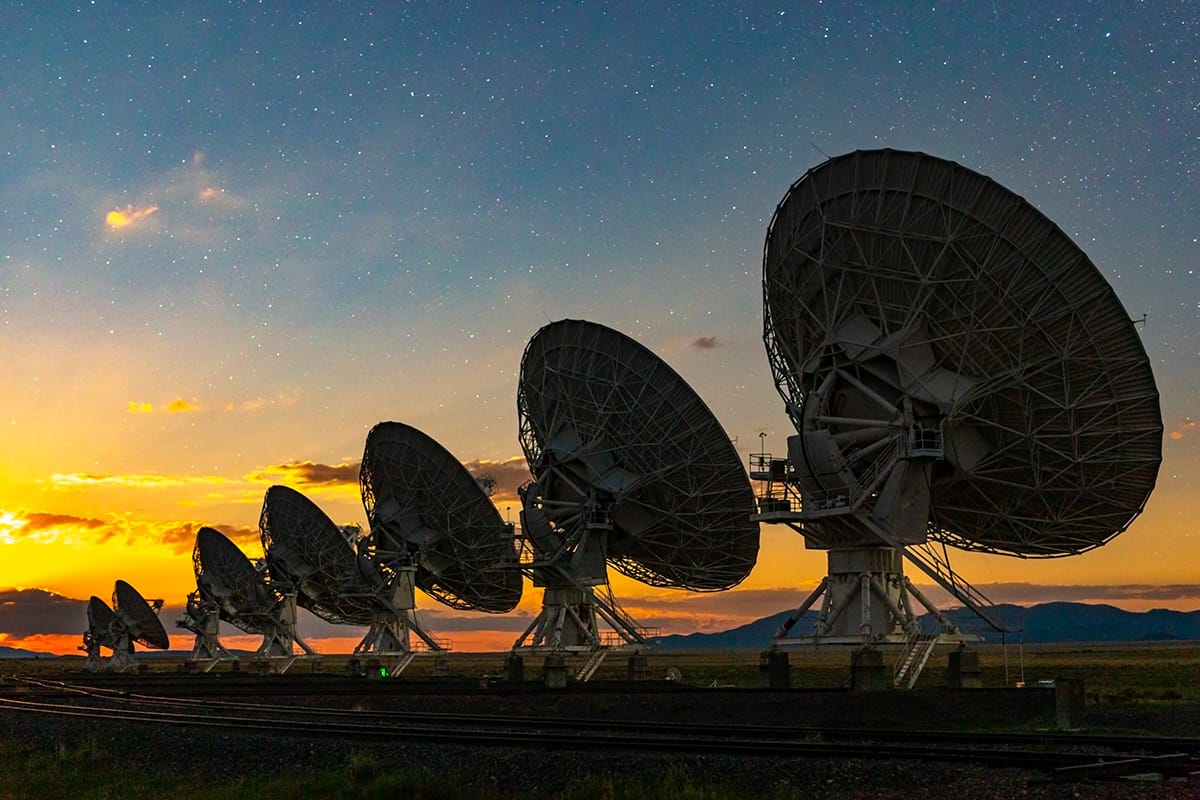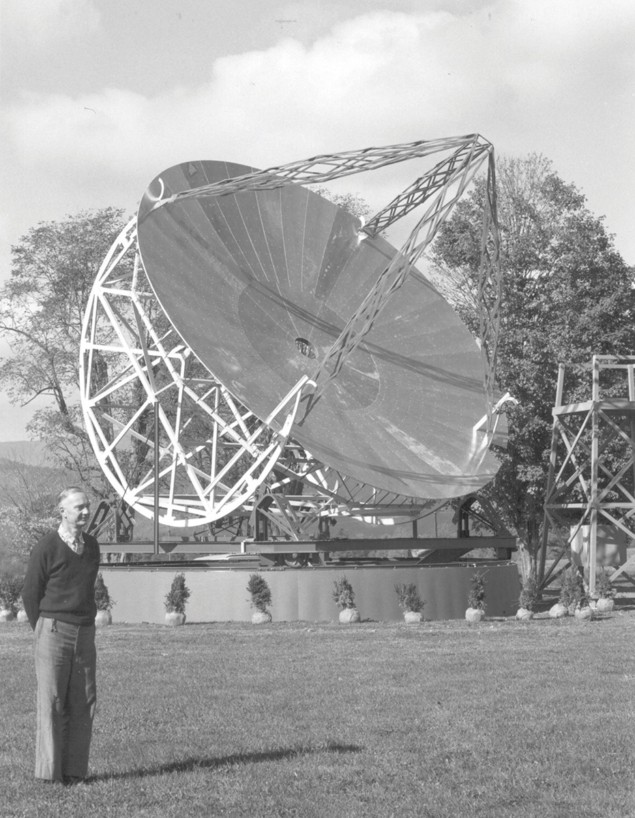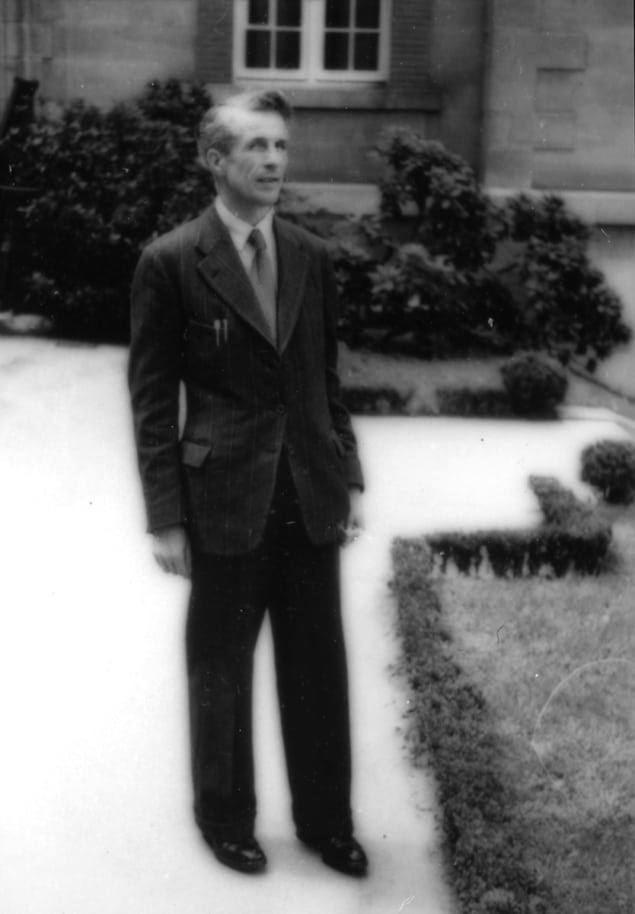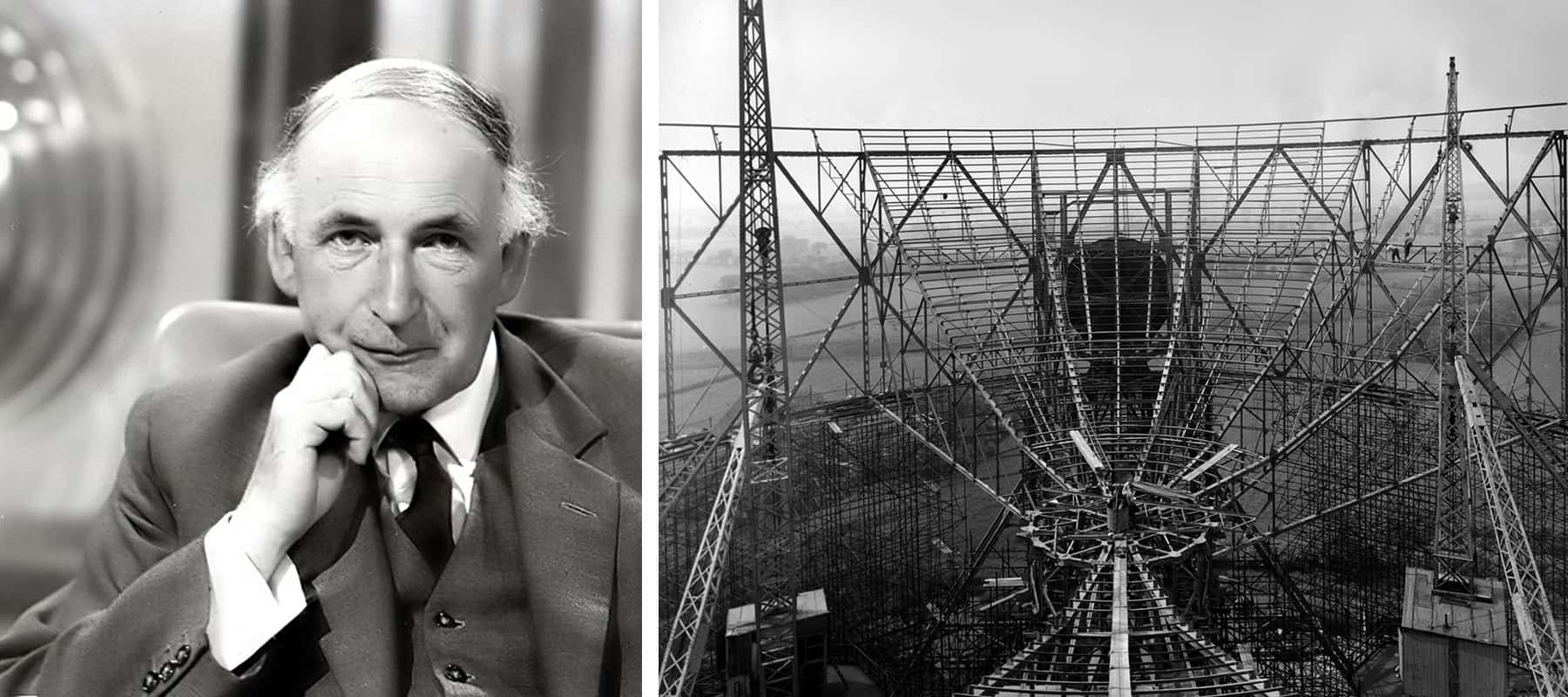Having emerged from amateur beginnings in the backyards of radio engineers, radio astronomy is now the focus of elite, international global consortia. Emma Chapman outlines how the subject has developed and why it needs to strike a fine balance between its science and engineering roots
I’ve been thinking a lot about my identity recently. When someone asks me what I do, I describe myself as a radio astronomer, or a cosmologist, or an astrophysicist – depending on my mood and who I’m talking to. But I’ve never really felt I fully belonged in any of these options. It seemed to me that my pursuit of the first stars using radio data did not quite fit with cosmologists’ tense discussions of the inflationary paradigms and dark energy. Similarly, when visiting radio telescopes, the jargon of “receivers” and “gains” flowed over my head.
“Radio astronomer” is a curious phrase, as one rarely hears scientists attach themselves so closely to any other wavelength. I’ve never heard the phrase “gamma-ray astronomer”, for example. But having visited groups of amateur radio astronomers over the last year, I realized that I do not yet have the skills to call myself a true “radio astronomer”. The label is a badge of honour one cannot earn simply by using data taken by radio telescopes.

I am an active member of the Square Kilometre Array Observatory (SKAO), an international radio telescope that is currently under construction in South Africa and Western Australia. Although the project’s headquarters, are Jodrell Bank Observatory in the UK, the SKAO is a global project with partnerships stretching from Australia, China, Italy and the Netherlands to Portugal, South Africa, Spain, Switzerland and the UK.
Astronomer versus engineer
According to astrophysicist Philip Diamond, director-general of the SKAO, the project’s calls and meetings often span some 20 time zones. With such a global and populous observatory, it is unsurprising that many of the people who project manage the SKA are from business backgrounds. Diamond half-jokingly quipped once that some will never have even touched a telescope. But that’s not a bad thing – they are not there for their love of the stars. They are there because they know how to keep complex companies thriving, so that the end user (like myself) has great quality data flowing to them on time.
Diamond has undoubtedly earned the badge of “radio astronomer” – indeed, his PhD is in the subject, and his career has found him working at most of the major radio facilities in the world. Talking to him, it is clear he loves the bare bones of the instruments as much as the science they enable. Lower down the hierarchy, not everyone is as broadly situated. There is an explicit split between astronomers and engineers, with only a few exceptions.
The two consortia, engineering and science, even have separate conferences, though I don’t think anyone would test your soldering skills at the engineering meet-up, to grant you entry. While I did attend one engineering conference many years ago, I sit firmly in the science camp and I can tell you: sometimes that split feels more like a chasm. The engineers bemoan the scientists who ask for too much and who do not understand the limits of the technology. Meanwhile, at the science conferences, the scientists loudly despair of any antenna changes that diminish their own science goals, complaining that the engineers do not understand the science potential going down the drain.
These conversations are not unique to the SKA, but they are pronounced because the size of the collaboration is so big. The vast majority of researchers involved are based at their universities and companies across the globe, not in one location where they might have the chance to meet and lessen the tribalism.
In many ways, we are seeing radio astronomy returning to its roots, which began with an uneasy marriage between astronomy and electrical engineering. It took time for scientists in those two fields to learn to cohabit and teach their academic offspring – but eventually universities produced ready-rolled radio astronomers who created the great radio facilities of the 1960s and beyond.
Recreational roots
Radio astronomy was pioneered by Bell Labs engineer Karl Jansky and the British scientists James Stanley Hey and Bernard Lovell (see boxes below). Their first discoveries were possible only thanks to electrical engineers, astronomers and amateurs working together. But with large-scale radio astronomy increasingly becoming a collaboration between two stark specialisms – engineers on the one hand and scientists on the other – what about the jack-of-all-trades amateurs? Is there still room for the group who played such a vital role in the genesis of the field?
Karl Jansky: the engineer

In 1928 Karl Jansky was an engineer with Bell Labs in the US, where his job was to reduce the annoying crackles on the new transatlantic radio telephone service that cost $25 a minute ($400 today). Most of the noise he found was due to local disturbances – such as lightning storms – but there was a lesser, continuous hiss in his headphones that he couldn’t place. Putting his engineering skills to good use, Jansky built his “Merry-go-Round”, a 30-m-wide arrangement of rectangular loops of wire that together acted as an antenna, all placed on repurposed Ford Model T wheels. This was during the Great Depression, after all, and money was scarce.
There followed a frustrating year, where Jansky chased the hiss across the sky, at first convinced it was coming from the Sun. But by 1932, he eventually realized that the true source was the centre of our galaxy. Jansky didn’t come to this conclusion alone. Realization dawned only when an astronomer colleague suggested plotting data from the whole year together, and a daily shift of 4 minutes resolved itself: the exact sidereal time (time determined by the apparent daily motions of the stars) you see in objects outside of the solar system. Unfortunately, as Bell Labs was not involved in radio astronomy, Jansky did not pursue this discovery – but his research was taken forward by amateur astronomer Grote Reber.
Grote Reber: the first radio astronomer

For a number of years after Jansky’s 1932 discovery, there was one radio astronomer in the entire world, and he was an amateur with a reputation for the eccentric. Grote Reber, a young US engineer who worked for a radio equipment manufacturer in Chicago, had devoured Jansky’s pre-war literature and contacted various academic departments asking when they would act on this clearly important discovery. He repeatedly got the brush-off and eventually, bored with the disrespect from professional astronomers, in 1936 he decided to build a radio telescope in his mother’s back garden.
Using his radio engineer skills, Reber worked out the best shape for the dish (a parabola that would act as the blueprint to most future radio dishes). He then took a summer off work and a year’s worth of salary out of the bank and built a 9.6 m dish. The neighbours feared it could change the weather, pilots rerouted to avoid it, and school children used it as a climbing frame when he wasn’t looking.
Reber, undeterred, first confirmed Jansky’s experiments and then mapped the whole radio sky in the early 1940s, discovering the first radio galaxy, Cygnus A. He also made some of the first solar radio measurements, while professional astronomers were still just waking up to the potential of radio astronomy following the declassification of documents after the Second World War. As Reber’s (and later those of James Stanley Hey and Bernard Lovell’s) results became more well-known, there was a rush to observe the radio sky.
Those with a physics background could make the equipment but didn’t have a clue what they were detecting. Meanwhile, astronomers knew what they wanted to look at, but couldn’t understand the electrical engineering. In these first years, academics could offer only half the skills for a true radio astronomer: they could understand the experiment or they could understand the results. Reber seemed to be the only person who could do both. Alone, in his mother’s garden, Reber was the first radio astronomer, amateur or professional, and remained so for over a decade.
James Stanley Hey: the teacher

In 1942 the radar defence network of Britain’s Royal Air Force (RAF) failed for a nail-biting two days. Physicist James Stanley Hey found himself in charge of working out why the failure occurred. He had been drafted out of teaching physics at Burnley Grammar School in Lancashire at the start of the Second World War, when he joined the Army Operations Research Group. Hey had been given a cursory radio-engineering briefing and put in charge of a team responsible for improving the radar for anti-aircraft guns. By cross-referencing the timing and extent to which each radar station suffered a blackout, Hey worked out that the source of the radar failure was the Sun.
Had he been an astronomer Hey would have been perplexed, as most astronomers at the time knew that there had only been failures in attempts to detect solar radio waves. Even Thomas Edison had not succeeded. As a physics teacher, Hey had no such preconceptions, however, and readily admitted his own ignorance. He even went as far as calling the Royal Greenwich Observatory to ask if anything was wrong with the Sun. As it happens, it turns out there was, as the astronomers at Greenwich confirmed. Indeed, Hey found out that during the exact window the radar stations found themselves overwhelmed with noise, a monstrous sunspot had bloomed across the surface of the Sun.
At the time, the RAF must have been pleased the source wasn’t a new German jamming technology and thankful that there had not been a raid while the defences were blind. After the war, with his work declassified, Hey began to give talks, but the astronomy community was not kind. Who was this man, a teacher no less, to tell them the Sun emitted radio waves? Ridiculous!
Luckily, his vindication came quickly when, in 1946, another mammoth sunspot crossed the solar disc and produced the same interference. At this point, radio astronomy was established as a serious profession across the world, and Hey and other physicists (including Bernard Lovell) scavenged disused wartime radar equipment and constructed their own listening devices. This time, though, they were pointed not at enemy planes, but at the stars.
Bernard Lovell: the physicist

When the Second World War began in 1939, Bernard Lovell was a researcher at the University of Manchester, UK, where he was visualizing the tracks of ionizing particles through vapour in a cloud chamber. Lovell had been drafted in to develop portable radar units, but they were suffering from a pesky source of interference. Eventually the false signals were attributed to showers of particles interacting with the ionosphere and creating emitting radio waves –a fortuitous discovery for Lovell. Having struggled with table-top cloud chambers, he realized he could rely on the Earth’s atmosphere as both particle accelerator and cloud chamber.
After the war, Lovell and others – including his wartime colleague James Hey – “rescued” some disused radar equipment and set it up in the fields of a small outpost of the University of Manchester, at Jodrell Bank. The quiet location should have meant he heard the ping of the radar picking up the trails of a particle shower once an hour. But, to his surprise, he heard a cacophony. Hey suggested that Lovell’s signals could instead be due to the entry of a space rock into the Earth’s atmosphere. The ionized trails left behind by these meteors would reflect radio signals, giving away their position.
Lovell, not in any way qualified to think about meteors, quickly found out that professional astronomers had neither the time nor the inclination to use their precious telescopes to study them either. They left that business to the amateurs. And so it was that Lovell convinced Manning Prentice – solicitor by day, amateur astronomer by night – to join him at Jodrell Bank during the next big meteor shower. Prentice would lie back in his deckchair and shout when and where he saw a meteor. Each time, Lovell would turn the radar equipment in that direction and shout if there were pings on the radar screen.
It became quickly apparent that Lovell had indeed been recording meteor showers. Cloud chambers and particle physics now forgotten, Lovell began raising money to build the Mark I Telescope at Jodrell Bank (later renamed the Lovell Telescope) and began down the path to becoming one of the greatest radio astronomers of the 20th century. All it took was lessons from an amateur.
The word “amateur” has two common meanings: “one who engages in a pursuit, study, science or sport as a pastime rather than as a profession” and “one lacking in experience and competence in an art or science”. From gardening to DIY, there are many skills at which I am both unpaid and incompetent, and so it must go deeper than that. Indeed, the Latin root of the word is amator, meaning “lover”. Literally, to be an amateur in a pursuit is to love it, to have a passion for it.
It turns out I had been unfairly judging those who engage in amateur hobbies, not least in the field I thought I knew better than anyone: radio astronomy. Amateur astronomers might not be paid, or produce high-profile academic papers, but the pings of a meteor and the hiss of the Milky Way in their headphones make them beam with joy.
Upon searching for a modern equivalent of the pioneering US amateur radio astronomer Grote Reber (see box above), I came across numerous associations of amateur radio-astronomy clubs observing everything from the galactic spiral arms to, astonishingly, pulsars. Upon speaking with a few – including the British Amateur Astronomy Radio Astronomy Group, the Lincoln Amateur Astronomy Club, and the Sutton and Mansfield Amateur Astronomy Club – I realized that nowhere do I feel more like an amateur than in an amateur astronomy club.

Indeed, when I meet such groups, I must seem such a disappointment to the members; not that I am ever made to feel that way by them. The optical astronomers resident at these clubs usually do well to recover from their shocked pauses after I admit I don’t know what planet, constellation or star they are pointing at, while the radio amateurs politely try to get past my lack of experience in building or maintaining radio telescopes.
Dishes adorn roofs, lines of wire stretch across posts and antennas of all shapes point towards the sky. The technology is so simple and familiar looking that it is easy to assume those in the sheds are just trying to tap into a free radio or TV service. To me, though, I jump in excitement as I see the antennas shaped to pick up the storms of Jupiter or measure incoming solar flares.
The people who voluntarily maintain these telescopes are most often retired men who used to work in fields such as electrical engineering or radar science. They are experts at terrestrial radio technology who, after retirement, turned their devices to look up – either for the pure challenge or, truly, because their doctors told them they should no longer be carrying their hulking optical tubes along dark, icy fields.
There are still plenty of professional radio astronomers with knowledge of their antennas bordering on the level of horse-whispering – but I have met them mostly at the older, smaller telescopes and less frequently among my generation of academics. In large collaborations, radio astronomers like this are rare these days, due to a necessity of scale. In my view, that’s a loss. It was in the amateur groups’ cold, run-down sheds that I rediscovered the spirit of radio astronomy. Here were the true radio astronomers, amateur or not.

History looms large over the SKA headquarters at the Jodrell Bank Observatory, sitting as it does in the shadow of the iconic Lovell telescope. This 76 m dish was once the largest steerable radio dish in the world when constructed in 1957 and the phenomenal feat of its construction means only two telescopes have surpassed it since (in Effelsberg, Germany, and the Green Bank Telescope in West Virginia, US).
Large-scale radio-telescope arrays, such as the SKA, are the vital next step to gather light over larger areas. Indeed, the SKA is an interferometer, one part of which comprises 130,000 antennas in the West Australian Desert, linked so that incoming long-wavelength radio waves “see” a giant collecting area that circumvents the mechanical-engineering constraints of a physical dish.
A singular dish is easy to anthropomorphize and love; I suspect that an array of 130,000 antennas is less likely to induce as much love and loyalty. Perhaps one will develop a liking for antenna 118,456, which always seems to go cheekily offline on a Tuesday, but it will be the data engineer who chuckles. The astronomer will probably never know.

Rogue radio astronomer
This lack of consolidated knowledge is a cause for concern for some radio astronomers, who know how important it is to understand how data are collected. I found one such astronomer in the physics department at the University of California, Berkeley, US. As the director of its Radio Astronomy Laboratory, Aaron Parsons has made major contributions in my research field of the first stars, heading a collaboration of scientists in their quest for radio signals from the early universe. For me, touring his lab was a magical experience. I darted around, lifting sheets of metal and admiring different antennas while listening in rapture as Parsons spoke about each piece, as though he were a passionate curator of art.
Aaron Parsons is now what I like to think of as a rogue radio astronomer, turning his back on the evolution of the field towards global collaboration
Parsons freely expresses his concern – bordering on cynicism – regarding large collaborations, because of the natural split in expertise that efficiency dictates. Indeed, he is now what I like to think of as a rogue radio astronomer, turning his back on the evolution of the field towards global collaboration. He even spends his holidays camping alone or with his son in isolated parts of the US, looking for the perfect canyon across which to hang his newest, handmade antenna.
The ingenuity of his solo collaboration is overtly reminiscent of Reber and Lovell. Parsons builds his own instruments, always keeping in mind how he expects the data will look. He tells me he would struggle to trust any other scientist’s analysis, unless they have built the antennas themselves. One must know the instrument to know its effect on the data, more so than ever when the tiniest cosmological signal can be washed out by modelling an antenna effect incorrectly.

Radio pioneers: the enduring role of ‘amateurs’ in radio astronomy
As we now enter an era of immense interferometry, we risk unpicking the tight marriage between electrical engineering and astronomy. Indeed, the knowledge required to show expertise in any one aspect is now too great for one person, or even one PhD training programme. The happiness of any ongoing relationship relies on spending time together and communicating openly. Large observatories such as the SKA will thrive only with the scientists and engineers exchanging knowledge and respecting each other’s expertise and love for their craft. One without the other is as good as nothing at all.
In some ways, true radio astronomers are a dying breed. They are found mainly at smaller telescopes or in amateur clubs; it’s potter for pleasure, not publish or perish. I understand why large collaborations need a clear split between engineers and astronomers, but both sides need to learn a little of the other’s language so that the essential marriage of minds does not falter. Your local amateur astronomy club could very well be the best place to do just that.
- SEO Powered Content & PR Distribution. Get Amplified Today.
- PlatoData.Network Vertical Generative Ai. Empower Yourself. Access Here.
- PlatoAiStream. Web3 Intelligence. Knowledge Amplified. Access Here.
- PlatoESG. Carbon, CleanTech, Energy, Environment, Solar, Waste Management. Access Here.
- PlatoHealth. Biotech and Clinical Trials Intelligence. Access Here.
- Source: https://physicsworld.com/a/radio-astronomy-from-amateur-roots-to-worldwide-groups/



